#Composite Mummies
Explore tagged Tumblr posts
Text
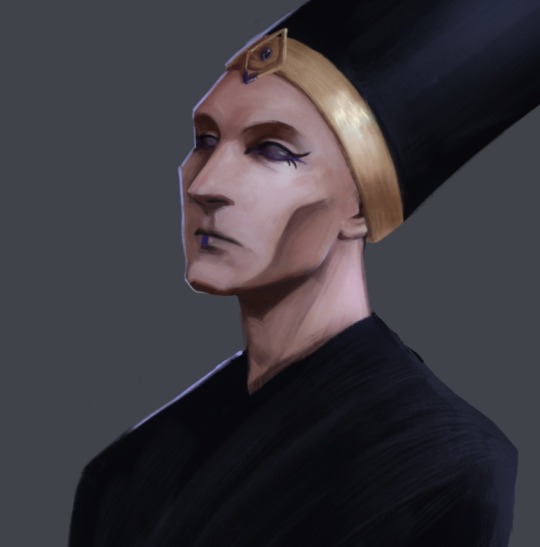
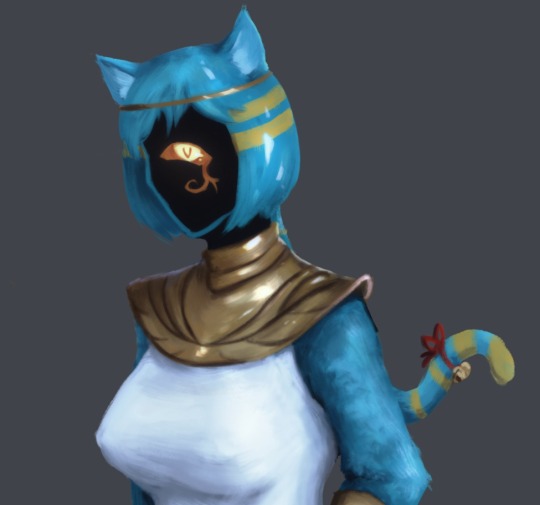
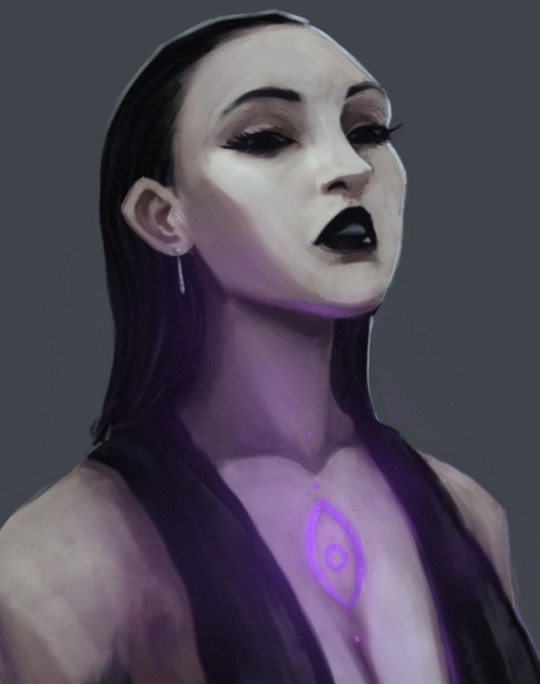
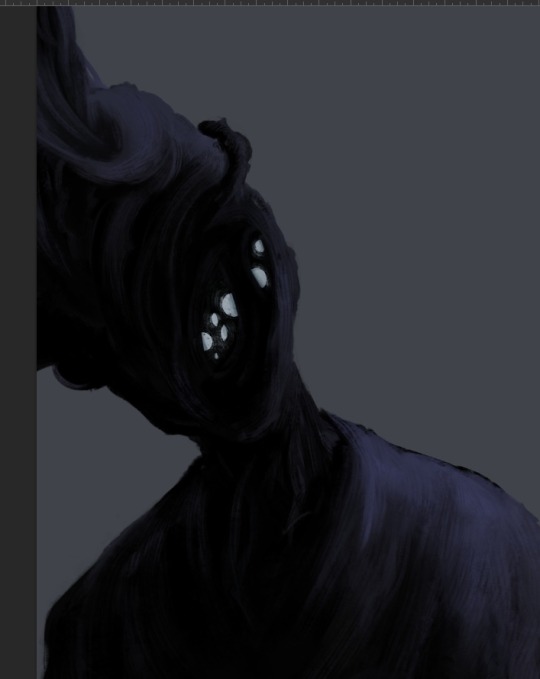
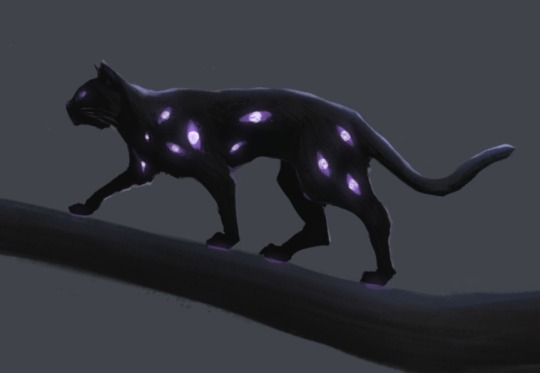

i've decided to cut page with 11 Nyarlas (i don't like compose + i'm really tired to draw this), so here some of them that i like:
a pharaoh, Kadath's one
aunty nyan-nyan from dating sim (hell love her design)
lady Nyarl
basic black man
kitty Nyarl
Mummy Nyarl
and how it supposed to be, it's only 3 left, but whole composition and basic poses makes me sick of (and draw transient design it's not what i want to speedrun)
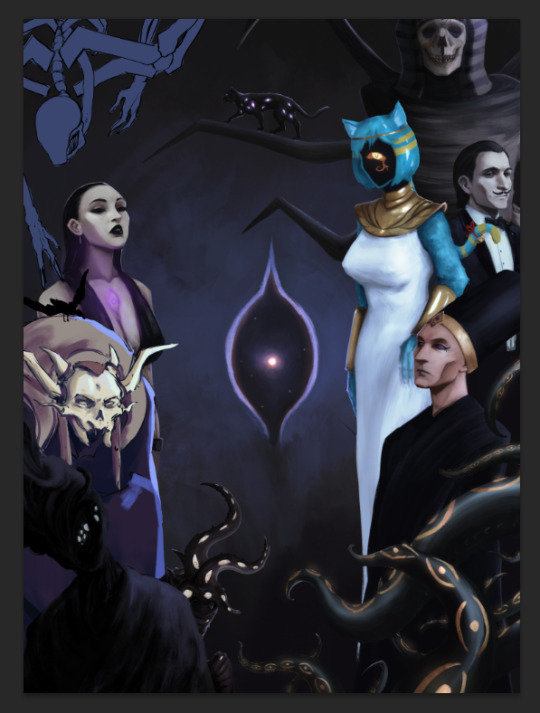
#lovecraft#h.p. lovecraft#lovecraftian horror#lovecraft inspired#nyarlathotep#crawling chaos#dream quest of unknown kadath#dreams in the witch house#Sucker For Love: First Date#sucker for love#nyanlathotep#art#fan art
210 notes
·
View notes
Text

Face of the coffin of the “Belgrade mummy”, ancient Egyptian mummy from the Ptolemaic period, late 4th-early 3rd century BC around 300 years BC, from the collection of the National Museum of Serbia in Belgrade.
The coffin with the mummy was purchased in Luxor, Egypt, by Pavle Riđički in late 19th century, who donated it to the National Museum of Serbia in 1888.
This antropoid (human-like) coffin contains a mummy of Nesmin, ancient Egyptian priest from Akhmim, some 200 kilometers north of Luxor. Name Nesmin means “The one who belongs to god Min”. In 1885 in Luxor a stone stele was found, carved with inscription dedicated to Nesmin and his family, saying thet Nesmin, as all his male ancestors, was a priest in a temple dedicated to Min, god of fertility and harvest. The stele is now kept in Egyptian Museum in Kairo in Egypt.
The coffin is made of the tamarix wood, and it used to be richly decorated with painted motifs in vivid colors and some details in gold. Only traces of the coloration are now preserved. Below the chin is a hole which used to hold a ceremonial beard. Eyes and eyebrows on the face of the coffin were made of blue glass paste, and face was covered with gold. In the stomack area is painted goddess Nut with spread wings, and below are two symetrical figures of god Anubis.
Lower part of the lid also bears and important hieroglyphic inscription, a passage from the Egyptian Book of the Dead, chapter 191 dedicated to the return of the soul into the body. This chapter is rarely find on the coffins, only about 20 coffins with this text are known so far.
Dimensions of the coffin – 182.5 x 52 x 42 cm.
Arms of the Nesmin’s mummy were crossed on the chest, and nails on his hands and toes were covered with gold. Eyes were replaced with non-metalic implants. Within the banages of the mummy were found different amulets made of gold, lapis lazuli semi-precious stone and faiance representing djed pillars, gods Nephtys, Horus, Isis and Maat, Eye of Horus and heart amulet, along with composite necklace comprised of many faiance beads. The mummy also contained papirus scroll of the Book of the Dead.
Cartonage mask and cover of the mummy are preserved only in framents, on which are visible falcon heads painted on the collar, and figures of goddesses Isis, Nephtys and Nut and some minor deities.
Anthropological analysis showed that Nesmin suffered from spine deformities spondylosis and scoliosis. He was around 165 cm tall and was about 50 years old when he died.
The coffin and Nesmin’s mummy are currently kept in Archaeological collection of Faculty of Philosophy in Belgrade
61 notes
·
View notes
Text
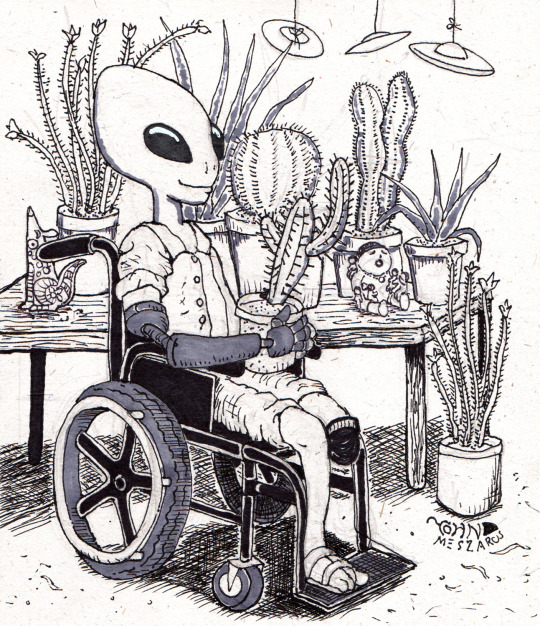
ROSWELL ALIENS- NEW MEXICO
Finally finished all 50 State Cryptids! Time to start putting them together into a book!
I always have a bit of a quandary whenever I showcase an alien as a “State Cryptid”. For many people the term “cryptid” typically refers to unknown Earthly animals. But over time this blog has evolved into more of an overall tour of speculative creatures in American pop culture and folklore where the lines between “natural animal”, “supernatural entity”, and “extraterrestrial” become very blurry. I’m also much more interested in the history behind these sightings than the classification of each creature, or even whether it plausibly exists at all. Plus I’ve already featured several extraterrestrials already such as the Pascagoula creatures, the North Dakota Meccano-Mummy, and the Grays that allegedly abducted Barney and Betty Hill.
June 14, 1947- Rancher W.W. “Mac” Brazel and his son were driving on their property 80 miles outside of Roswell, New Mexico when they came upon “a large area of bright wreckage made up of rubber strips, tinfoil, and rather tough paper, and sticks.” What was it? They had no idea.
Initially unsure about what to do with the strange find, Brazel collected some of the debris a few days later and drove it into Roswell to give to Sheriff George Wilcox. The sheriff, equally perplexed, contacted the nearby Roswell Army Airfield’s 509th Composite Group. They sent a team out to the desert to collect the remaining debris and ascertain what it was. A few days later Major Jesse Marcel made a statement to the local paper about the incident. Though he didn’t explain exactly what the object was, headlines claimed the army had captured a “flying saucer”.
Flying saucers were in the news a lot that year. On June 24th, 1947 amateur pilot Kenneth Arnold reported seeing an airborne, disk-shaped vehicle near Mt. Rainier in Washington. Later, Navy seaman Harold Dahl claimed he had seen a whole group of the strange objects on June 21st near Puget Sound. Soon people were sighting flying saucers everywhere. Much of this hysteria was fueled by fears of the growing power of the Soviet Union and worries about what secret experiments they might be conducting. Paranoia about unknown Russian flying vehicles soon turned upwards beyond the boundaries of Earth as people began to speculate that flying saucers actually came from other worlds. These mysterious objects were labeled UFOs- Unidentified Flying Objects- by the US military and the term quickly caught on in popular culture. Though UFO originally just meant an unknown aerial object, with no indication of origin, it became synonymous with extraterrestrial spacecraft.
Eventually the army explained that the debris found near Roswell had come from a downed weather balloon. But such a prosaic explanation did not stick with the public. The idea that creatures from outer space had crashed on Earth had firmly taken hold, and a good number of people believed that this “weather balloon” story was just a flimsy cover-up. It certainly didn’t help that the government was tight-lipped about many of its programs out of fear that the Soviets might get wind of them.
It turns out, though, that the weather balloon story was actually close to the truth. In the late 1940s the government began Project MOGUL, in which massive balloons equipped with sensitive detection instrument were launched high into the ionosphere to look for signs that Russia was testing nuclear weapons. One of these balloons had fallen out of the sky, crashed on Brazel’s ranch. Not wanting to reveal their secret project, military officials had felt it was better to let the “alien spacecraft” idea percolate in the popular imagination instead.
A decade later In the 1950s rumors cropped up that people had seen government agents collecting alien bodies in the New Mexico desert. These stories were soon conflated with the Roswell crash legend, leading to conspiracy theories about frozen alien corpses preserved in secret government hangers. For many years any secretive government sight was rumored to have “aliens in the freezers”. Eventually accusations settled on Area 51, a classified military base in the Nevada desert.
These reports too had a more down-to-Earth explanation, though. Investigations revealed that the “alien bodies” had actually been special crash dummies fitted with sensors and dropped from airplanes by the Airforce to test the effects of high-altitude parachute drops. Like Project MOGUL, these tests had been hidden behind a thick veil of secrecy which did little to dispel the rumors.
As for Area 51, though the government denied its existence for decades despite clear evidence that it existed, it was officially confirmed in 2013 as a base for testing experimental aircraft such as the U2 spy plane, the Archangel-12, the SR-71 Blackbird, and others. No word on frozen alien corpses, though. By the way, the name “Area 51” is more of a pop culture term. The base is typically just called “Groom Lake”, “Homey Airport”, or simply the “Nevada Test and training Range” by the CIA.
The Roswell Aliens story gained a major surge in popularity in the 90s with shows like “The X-Files” and “Dark Skies”, movies like “The Arrival” and “Independence Day”, and comic books like “Roswell, Little Green Man” by Bill Morrison. There was even a 1995 psuedo-documentary called “Alien Autopsy: Fact or Fiction” produced by the Fox Network and hosted by Star Trek actor Jonathon Frakes. It allegedly showed vintage footage of the dissection of an alien corpse from the Roswell crash. This video was eventually revealed to be a hoax, with the corpse actually a rubber dummy stuffed with jam and animal organs from a butcher.
For my depiction of the Roswell aliens, I wanted to get away from the typical images of corpses lying on dissection tables or floating in preservative-filled tubes. I also wanted to avoid the trope of aliens as malicious, terrifying invaders like in Independence Day or any number of B horror movies.
Instead, I chose to portray them as normal beings adapting to a new life on Earth. Here we see one of the aliens recovered from their crash with the help of a wheelchair and prosthetics. I’ve imagined them setting up a new life for themselves in New Mexico, just trying to keep to themselves. They’ve taken a keen interest in their new home, evident in their collection of local plants like ocotillo and yucca. They’ve also made friends with many locals, including Indigenous communities, evident here in the “Singing Mother” figure on the table. These figures were first created in 1964 by artist Helen Cordero of the Pueblo de Cochiti, a community of the Keres Pueblo peoples.
As immigrants themselves, the Roswell Aliens also feel a kinship with the many other people that have moved to New Mexico from other countries. This is reflected in the alebrije they got from a Oaxacan-born artist.
REFERENCES
The Roswell UFO Festival!
A Smithsonian article on the crashed MOGUL balloon
An article from History.com about the Roswell incident
An article from the Chicago tribune about the high-altitude dummies that were mistaken for alien bodies.
A Space.com article about Area 51
An article about the infamous "Alien Autopsy" pseudo-documentary
Another article about the "Alien Autopsy" film
45 notes
·
View notes
Text
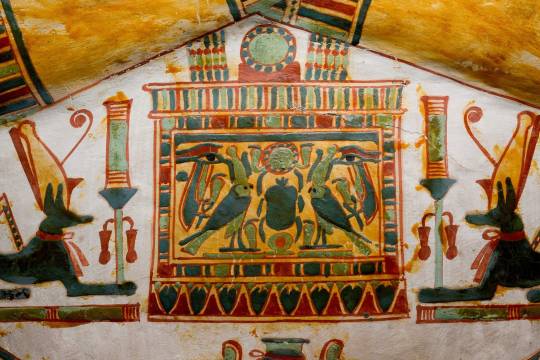
Detail of the Outer Coffin of Henuttawy
The outer coffin lid of Henuttawy, intended to resemble a wrapped mummy, wears an elaborate pectoral topped by a cavetto cornice in the shape of a small shrine within which are two winged wadjet eyes, with suspended uraeus cobras holding ankhs. Below these, Horus falcons flank a central scarab that pushes a sun disk upward, an image of the rising sun and of rebirth.
The composition is similar to the Middle Kingdom pectoral of Sithathoriunet. At the sides of this pectoral are figures of Anubis, god of mummification, represented as a jackal wearing the crowns of Upper and Lower Egypt and holding empowering scepters.
Third Intermediate Period, 21st Dynasty, ca. 1000-945 BC. Now in the Metropolitan Museum of Art. 25.3.182a, b Read more
74 notes
·
View notes
Text
my 3 y/o likes to take existing melodies and substitute her own lyrics. her latest composition is "twinkle twinkle little mummy" so you could say that the Egyptological indoctrination is going well
61 notes
·
View notes
Note
Yoyoyo! I made my own recreation of the Beechey Boys including Thomas Morgan, although Thomas Morgan is drawn using the composite image of your nicey art.
omg... well i would like to see your art!! everyone start making more beechey island ice mummy posts forever.
14 notes
·
View notes
Text
In the year 2126, England was ruled once more by a monarchy and nobles after years of anarchy. The new monarchies were ruled by Queens. When the Queen died, the people would choose representatives who would choose the next queen from the eligible princesses. Air travel was accomplished through balloons, aerial horses (inflated with gas), wings, and aerial sledges. There was also travel by horse, steam trains, and steam boats. Machinary and even automatons (some being used as lawyers, surgeons, and judges) were also run by steam or clockwork. The air quality in England had been greatly improved by the banning of burning coal. England started the practice of using chemicals on marble to create their sculptures. Greeks traveled around England as bards playing lutes and being fortune tellers. Communication was accomplished through telegraph or mail launched in balls by pnuematic cannons. Asbestos was still a commonly used product, including in fashion that employed jets of flame. In England, smaller houses were built on rails so people could visit the countryside without leaving the comforts of home. In the larger houses, an organ with pipes running through the house was played to summon and direct servents. The air composition and flow were regulated in those houses. Food was cooked with a chemical substitute for fire. All the world had been explored. Education was universal. The common tended to speak in a verbose, technical, and scientific way, while the nobility tended to speak simply and tersly. The upper class tended to be very emotional and have fits of passion as well as suffer from psychosomatic illness and exhaustion. England was at war with Germany. Spain, a military state that had been absorbed by Africa that prided itself on being a free republic (though criticizing the government or praising former governments was a mortal offense) was in a civil war with Ireland backing one side and France the other. While cannons and gun powder were used in war, horses, swords, wagons, and walls were still employed. England was once more a Catholic state. Ireland was ruled by a King. Besides his military escapades he engaged in personally, he had designs to lead an expedition to the moon and colonize it. Egypt was no longer filled with desert but turned into a lush agricultural country and the Nile heavily modified with canals. At the Great Pyramid in Egypt, Doctor Entwerfen and Edric revived the mummy Cheops back to life using electricity. The Mummy then traveled to England where he became a political puppet master in the shadows. ("The Mummy! A Tale of the Twenty Second Century" Novel)

#nerds yearbook#2126#sci fi#novel#book#the mummy#jane webb#jane loudon#22nd century#queen#war#england#spain#ireland#egypt#the great pyramid#cheops#reanimation#claudia#edwin#entwerfen#edric#rosabella#father morris#political intrigue#edmund#elvira#ambrose#father murphy#clara
3 notes
·
View notes
Text
Knightstone Household: Chapter 9, Part 4


Pollock: Mummy gift tomorrow
Suzanna: Yeah, it’s Winterfest tomorrow. When you wake up there’ll be a lovely tree and some nice presents for you
Pollock: I excite
Suzanna: Well before that can happen you need to sleep so snuggle down
Suzanna read a book to Pollock until he was snoring. After tucking him in she went over and tucked in Silas to. She was intrigued by human holidays and knew Winterfest should have snow. They never got any in Oasis Springs so she hoped Chestnut Ridge would put on a show.



Before heading to bed Suzanna attended to the various plumbing problems that had sprung up that day. The toilet in the guest bathroom needed fixing and the dishwasher had started playing up. After those she performed an expert repair on the shower she and Adam use.



Adam on the other hand had been working on his debate skills. He was almost at the top of his career but there were a few more things he had to upskill before he could try for a promotion.
Suzanna: Hey you’re human
Adam: Well you wanted to try a traditional Winterfest right? I see you’ve put on your disguise to
Suzanna: Yeah but... I may have been thinking about things other than Winterfest
Adam: Knew it! You’ve been glowing pink for hours
Suzanna: And the watcher put this new mod in and I can feel the heat of a flush in my cheeks, it's so weird



Adam: It looks nice. Do you think it’ll stay
Suzanna: I don’t know, she’s not too sure how the sickness part works but she wants to try
Adam: Man this watcher sounds much less stress than the Sixam aliens. You know I swear I saw a UFO when I activated the satellite this morning
Suzanna: Don’t worry about them. Worry about me
Adam: Care for an early present in bed
Suzanna: *laughing* Smooth, let’s go


During the night the snow started falling and our aliens transformed in to Winterfest Elves!



Of course wanting to properly immerse in the Winterfest spirit Suzanna made the family pose for a holiday photo. Happy Winterfest everyone!

The boys however were excited for gift time, and could hardly pull their eyes off the pile of gifts.
Suzanna: Alright, Adam you go first
Silas: I helped pick it
Adam: Hmm, too small to be a grill
Suzanna: Why would you need a grill in winter
Adam: I heard someone at work say they wanted one for Winterfest. Oh new paints! I’ve been looking for this blue for months but they were out of stock. Where’d you get it
Suzanna: Tell you and outlive my usefulness? I think not



Silas: What’s this
Adam: It’s a composition book. You were asking about writing songs so I thought you might like a place to write any you come up with. Your mum picked the colour
Silas: Thank you Daddy, thank you Mummy! Now Pollock it’s your turn
Pollock: For Pol
Silas: Yep. I went through my toys and I’ve found some you might like now that you can play with more
Pollock: YAY!



As Silas and Pollock discuss toys Adam pulls Suzanna away to give her gift to her.
Adam: Happy Winterfest Starlight
Suzanna: Let me guess. It’s an outfit you want me to wear
Adam: *chuckles* Not this time. I uh... I heard you talking to Shelley about gemology being a new skill? And I know you love to learn so I got you a book, I hope it’s the right one. I figured you’d like to learn a bit before cutting in to you collection
Suzanna: Oh Adam it’s perfect!


Adam: You’re not just saying that because I’m a hot head and could fly off the handle if you don’t like it
Suzanna: Adam, you’re my hot head. Besides, I know you wouldn’t mess with a woman with a simray
Adam: *laughs* I would not
Suzanna: I feel bad I only got you the paint now
Adam: Don’t be. You’re a gift to me, every day. I love you so much they can probably detect it on Sixam
Suzanna: *smiles* I love you right back, always and forever

Suzanna headed out to the garden and was mesmerised by the snow. She knew the watcher had installed a snow override but she hadn’t expected it to be this crisp and clear. It looked beautiful, and she loved seeing defined snowflakes rather than the old clumps. Most of the plants had spawned fruits, flowers and vegetables overnight but a few were still holding on to not growing. Hopefully when she returned to work they would snap out of their funk.


Inside Silas took some time to practice on the piano unobserved while Adam took Pollock to learn to potty. Their guests would be arriving soon and he didn’t want his youngest to miss it.


Previous ... Next
#sims 4#the sims#simblr#my sims#ts4#active simblr#R0909#SuzannaKnightstone#PolKnightstone#SilasKnightstone#AdamKnightstone
16 notes
·
View notes
Text
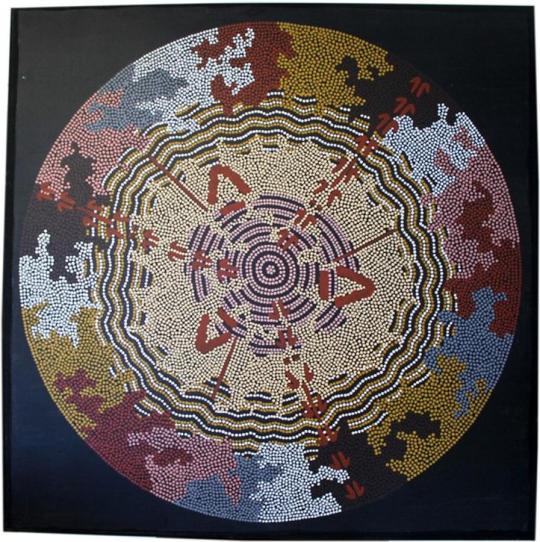
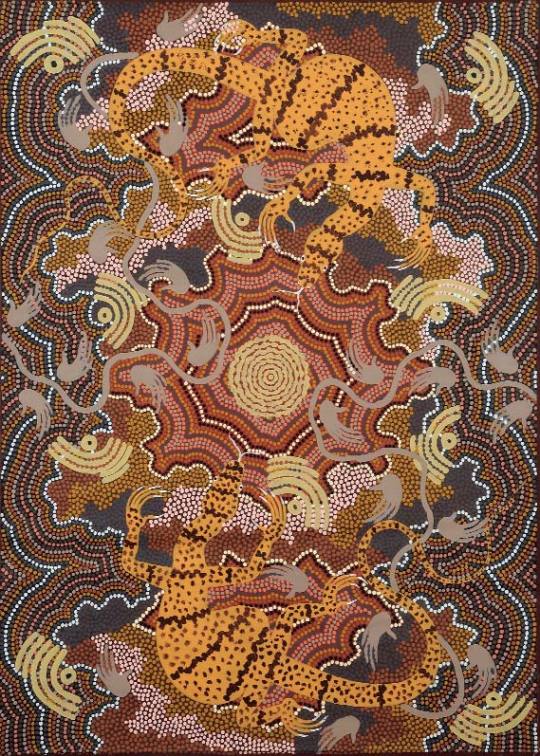
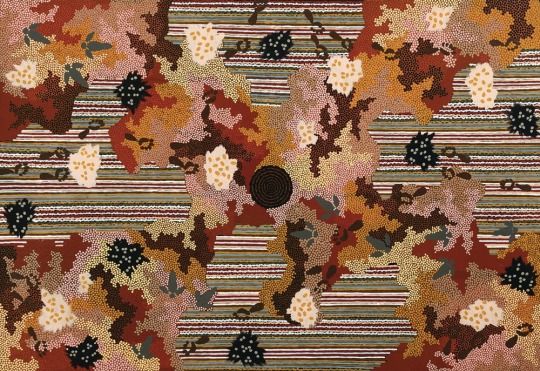


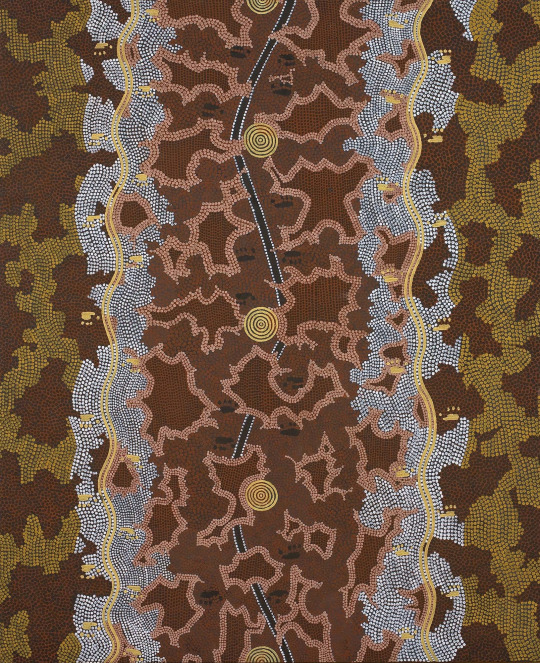



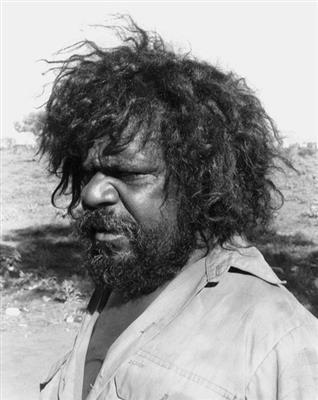
Clifford Possum Tjapaltjarri (c 1932 - 2002) was born in Tjuirri, an area north west of Alice Springs also known as Napperby Station. His father was born at Ngarlu, a location west of Mt. Allan, and his mother from Warlugulong, an area southwest of Yuendumu. This broad stretch of territory defined the diversity of subject matter in Clifford's paintings. Clifford enjoyed a traditional bush upbringing and was given the name Possum by his paternal grandfather. In the 1940's, Clifford and his family re-located to Jay Creek, where he became a stockman, working at several stations throughout the area.
Clifford Possum was said to be a true master artist, his character, charisma, and total dedication to his art and dreamings, as well as his tireless promotion of his and his family's work has set a high standard in establishing this movement from its inception to the present day. Art lovers and collectors, both here and around the world, have held the Desert Masters in high regard, because of the efforts by individuals such as Clifford.
Clifford passed away in Alice Springs on the 21st June 2002, after recently being recognised for his contribution to Australian Art and culture, by being made an "Officer of the Order of Australia". His final days were spent at the Hetty Perkins Nursing Home in Alice Springs, where he passed away surrounded by close family and friends. He will be sadly missed by those who worked with and knew him well, as well as art collectors and dealers around the world.
He worked extensively as a stockman on the cattle stations in and around his traditional country. During this time he developed an encyclopaedic knowledge of the Dreaming Trails that criss-cross the area to the north of the western McDonnell Ranges, which he depicts in painting his Dreamings.
His career as an artist began in the 1950's when he carved snakes and goannas. By the 1970's he was one of the most accomplished carvers in Central Australia. His first opportunity to paint came when one of Albert Namatjira's sons gave him acrylic paints and the master began his work. Clifford, living at the Papunya Community, was one of the first artists to be involved with the Aboriginal Art Movement.
The art of Clifford Possum is notable for its brilliant manipulation of three-dimensional space. Many of his canvasses have strong figurative elements which stand out from the highly descriptive background dotting. In the late 1970's he expanded the scope of Papunya Tula painting by placing the trails of several ancestors on the same canvas in the fashion of a road map. Within this framework, he depicted the land geographically. This laid the foundation for traditional Aboriginal Iconography to be placed on canvas. The other artists working with him took his lead and removed any elements of European Art from their work. In doing so Clifford, as well as the other artists involved with the Papunya Tula Movement, helped to develop the true definition of Aboriginal Art, an art revolving around a culture, The Jukurrpa.
In some of his stories Clifford attempts to give a visual impression of sunlight, cloud, shadow and earth to denote specific times of the day. His paintings show superlative skill, incredible inventiveness of form and are visually spectacular.
Clifford's work is contemporary but essentially Aboriginal in inspiration. To appreciate its full richness it is imperative that it is seen not only by its colour, composition and balance, but by its mythological detail. One of the extraordinary qualities of Clifford's work and other Western Desert artists is that they are a visual writing and speak to the Aboriginal as books do to Europeans.
When asked why he became an Artist, he answered,
"That Dreaming been all the time. From our early days, before European people came up. That Dreaming carry on. Old people carry on this law, business, schooling for the young people. Grandfather and grandmother, uncle and aunty, mummy and father, all that, they been carry on this, teach 'em all the young boys and girls. They been using the dancing boards, spear, boomerang all painted. And they been using them on body different times.
Kids, I see them all the time, painted. All the young fellas they go hunting and the old people there, they do sand painting. They put down all the story, same like I do on canvas. All the young fella they bring 'em back kangaroo. Same all the ladies, they been get all the bush fruit, might be bush onion, plum, might be honey ants, might be yala, all the kungkas (women) bring them back. Because everybody there all ready waiting. Everybody painted. They been using ochres all the colours from the rock. People use them to paint up. I use paint and canvas that's not from us, from European people. Business time we don't use paints the way I use them, no we use them from rock, teach 'em all the young fellas."
Clifford is one of the most renown Aboriginal Artists of his time. He was the chairman of the Papunya Tula Artists from the 1970's to the 1980's. His work is featured in many of the main galleries and collections around Australia and internationally. Collections include the National Gallery of Australia in Canberra and the New South Wales Art Gallery in Sydney. His work has travelled extensively around the world, including 'Dreamings - The Art of Aboriginal Australia' in New York, Chicago, Los Angeles and St Louis. He has had a book published dedicated to him and his paintings, 'The Art of Clifford Possum Japaltjarri', by Vivien Johnson. He is and has always been regarded as the leading figure in Australian Aboriginal Art.
Copyright Kate Owen Gallery May 2022
22 notes
·
View notes
Text
This week I listened to "We Are Beautiful, We Are Doomed"
"We Are Beautiful, We Are Doomed" is a lovely little album by Los Campesinos, a lovely little emo band out of a lovely little country (Wales)

⭐⭐⭐⭐ (4 out of 5 stars) I liked this one a lot! I'm already an established Lovejoy fan since day one of "Are You Alright?", and Los Campesinos are most definitely a major influence on Lovejoy, so I found this album very natural to get into and enjoy.
Anyways, opinion time! These are my top 3 (as always, no particular order, just the order as they appear on the album)
"Miserbilia" is a brilliant track that does the classic heavy lyrics and a pop/happy sound. I love the way this song goes from quiter sections to very loud choruses. I also love the way the singers' voices mesh together on this track. That is a big strength of this band.
"You'll Need Those Fingers For Crossing" really stands out to me for the lyrics, what they mean and how they sound and function within the song. I also really enjoys the rhythms throughout this song, particularly the intro, and how they fit together.
"It's Never That Easy Though, Is It? (Song For the Other Kurt)" is such a good song composition wise. I LOVE the structure of this song and the lyrics resonate a lot for me, it's a fun, and very real, type of "breakup" song. And again, I really love how the singers blend their voices together.
And onto the honorable mentions 🥳🥳🥳
"Documented Minor Emotional Breakdown #1" is a fun little song I love how the lyrics flow in this one and I cannot get enough of this band's instrumentals. I especially love they way the line "Do you kiss your mummy's lips with that mouth" fits into the song
"Heart Swells/Pacific Daylight Time" I love mostly for it's intro and how it fits with the previous song but very much establishes it's own identity. I also like the drums on this track and how they play such an important role but really are quite basic. I also like all the background noises on this track.
11 notes
·
View notes
Note
also, did you know that Europeans used to eat mummies because they thought that the mummies had medicinal properties (they also drank blood)
1. That's worse than cannibalism and my creepy brain went sjsjsnsjs
2. That's what you do when you cant lift up the pyramids 👍
3. Why aren't they smart enough to study the chemical composition of those medicines and produce them damn🤦
4. Are mummies really supposed to have blood for so long? I mean ik that the flesh is preserved but I'm sure the blood would get dried. Wont it?
9 notes
·
View notes
Text
Something I unambiguously love about TotK is how they have re-imagined the Gibdo.
Previous entries in the Zelda series portrayed them as mummies, an undead enemy wrapped in bandages, often able to be set on fire for either bonus damage, or to burn away their wrappings to make them more vulnerable to damage. In the 3D games, they behave identically to another undead enemy type, the ReDead, inheriting their nightmare inducing shriek that paralyzes Link as they slowly lumber towards them for their attack.
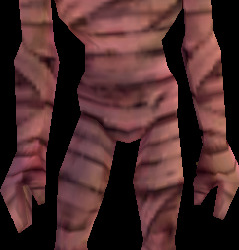
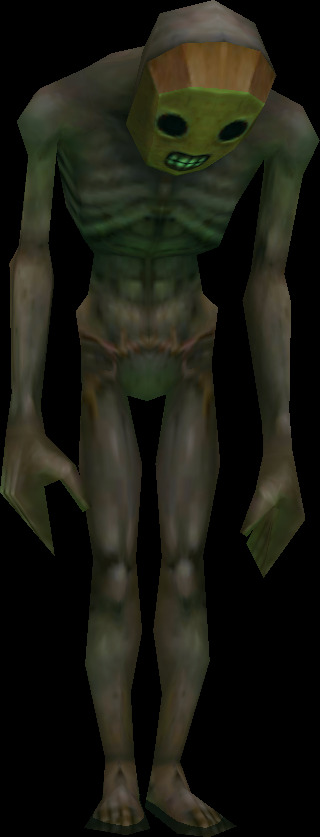
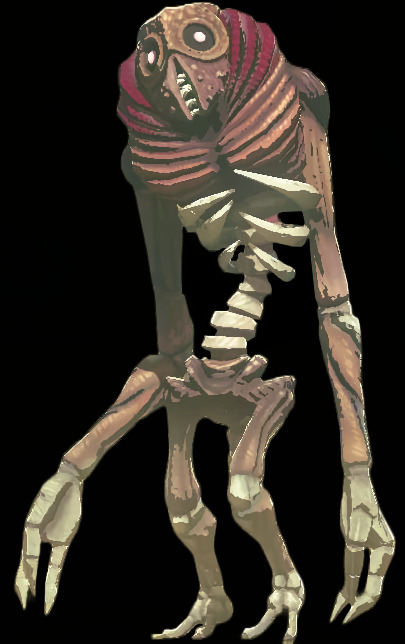
(Images of a Gibdo from OoT3D, a ReDead from Oot3D and a Gibdo from TotK)
In Tears of the Kingdom the Gibdo are visually similar to the early 3D ReDead. While they now lack their petrifying screech, they are still immensely durable, barely taking any damage from physical attacks. This durability can be stripped away, much like older Gibdo, with elemental damage.
On top of that, there are also flying variants, which have mothlike wings, further tying these already undead enemies to symbols of death. The boss version, Queen Gibdo, goes even further. Having a full on insectoid body composition.
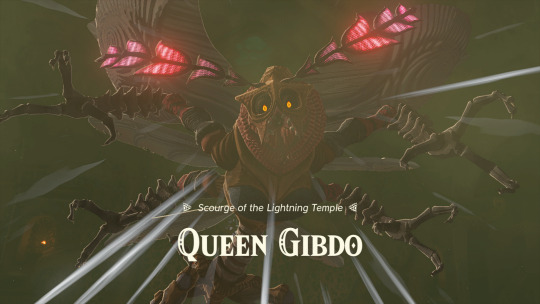
#sosei plays totk#tears of the kingdom#the legend of zelda#tears of the kingdom spoilers#mild spoilers but still
6 notes
·
View notes
Text

FORMATTING FIXED SLIGHTLY I HOPE
This painting is in the center. The world tree is above, carrying the living Sun, Aten, and the Solar Barque is below, where the dead sun is carried on the head of Ra.
With that being said, I'd like to take this opportunity to remind everyone that this is a very fanciful representation of Egyptian cosmology. At no point in history would Egyptians have depicted the universe in this way (This is for my friend, after all, not for an egyptologist). I've pulled symbolism from sources as distant as perhaps 2000 years and 1000 miles. Such is Egyptian history that 2000 years doesn't even bring us near halfway through.

In this painting, my friend is the sun at the top of the tree. She is brilliant, and moves between worlds. Below, The skulls between the roots of the world tree are reminiscent of Osiris (mentioned previously), the god whose death nourishes the world.
Of all the sun gods there ever were in Egypt, I chose Aten as best, for like my friend he was subversive. (Aten was championed as the sole creator of the universe in opposition to Egyptian Orthodoxy).
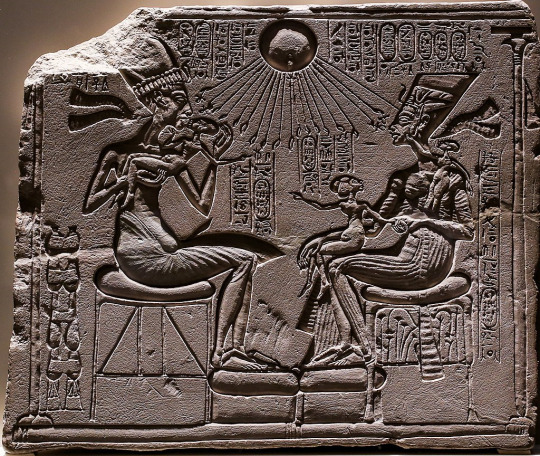
(This is the famous stele of Akhenaten and Nefertiti with their children. Aten is in the middle, but Nefertiti's daughter's finger points to the center of the composition.)
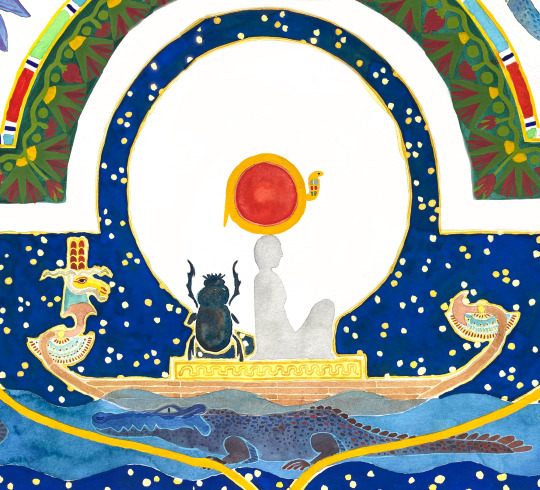
Further below, my depiction of the Solar barque comes from my favorite temple in Abydos. The ram-head on the stern is Khnum, the source of the Nile. The Scarab is Khepri, the morning sun. The mummy is my friend, sitting in the place of Ra, floating quietly through the halls of night toward the east to be reborn.
Rebirth is a theme which appears in most of the imagery I chose for this painting. Like The Lotus, which opens in the day and closes at night,
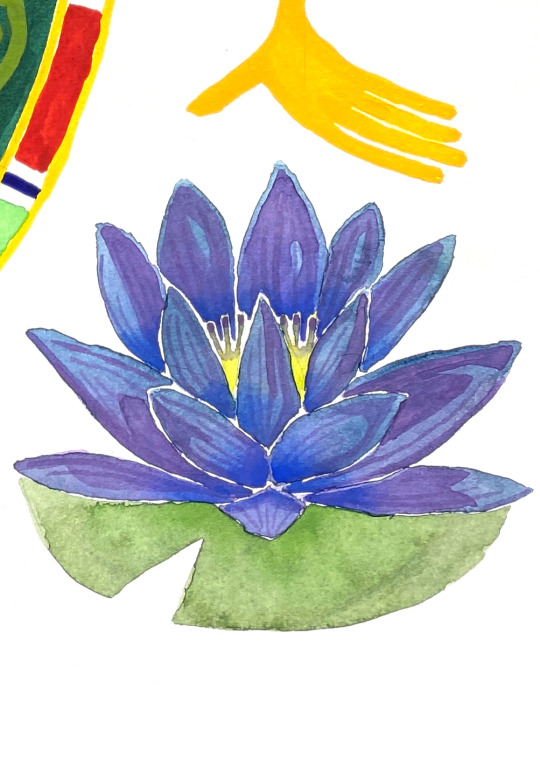
and like the Serpent Nehebkau, who was once an evil spirit, but who later became a protector,

both are symbols of rebirth, and a reminder that many of my friend's strengths were once a source of shame until her rebirth as a more self-actualized person. For example, her sexuality, symbolized here by the ancient Egyptian lettuce, was reborn to be a source of empowerment and liberation (look up the god Min, and his lettuce, for a good time).
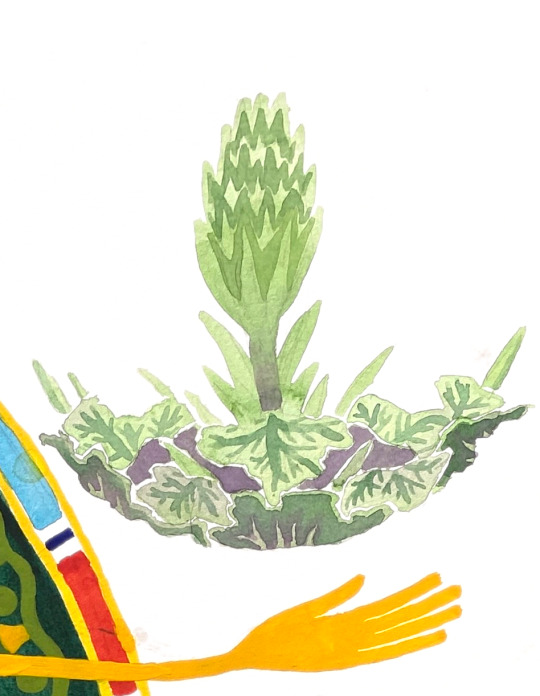
The Levant sparrowhawk is a bird which migrates northward out from Egypt. Its relevance to my friend's life is fairly heavy-handed. She left Egypt, and went north.
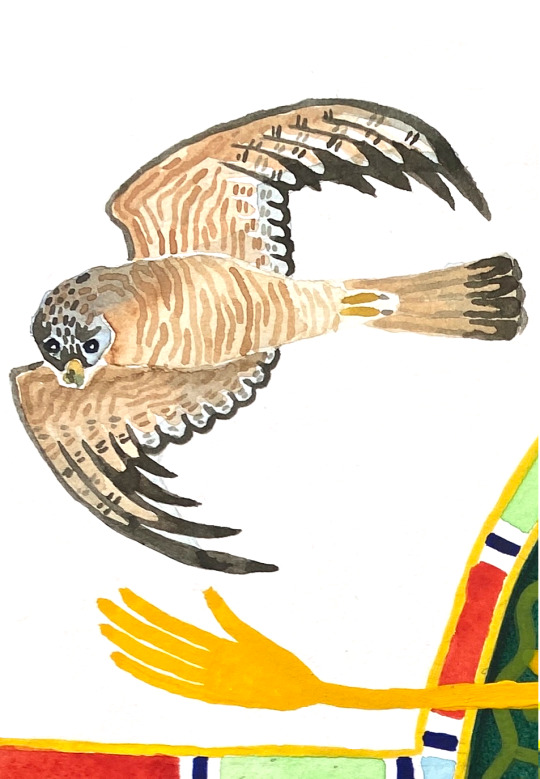
Finally, each of the fish in the river come from the Nile. From top left to bottom right, they are an elephant fish, a moonfish, a carp, a tilapia, a scorpion fish, and a puffer fish.

4 notes
·
View notes
Note
4, 8, 12 for the headmate asks?
Thanks for the ask!!
4. Which headmate is the most different from the body?
Most different? :0 This is an interesting question- it crosses out pretty much all our bipedal or humanoid members, so let me think about it a moment.
Hmm, okay, so we have a few possibilities for who could qualify other than literally any of our cats. We prioritized members that are far away from a humanoid form visually, not composition-wise; otherwise we'd have people like Flame Princess and all of our cookie run fictives on here.
Rashoumon is a sentient ability in Akutagawa's subsystem created from the clothing of the wearer, often taking a dragon-like form. It extremely rarely takes a bipedal form resembling a mummy, but this almost never happens.


Survivor is an animal alter called a Slugcat, sourced from the game Rain World. They look like this! They're super cute and completely nonverbal other than regular animal noises and body language.

Knight & Ghost are two fictives of the Vessel from Hollow Knight (that used to be one)! They have a buglike appearance with a strong white shelled head with horns and a soft black body. They're super little, too!

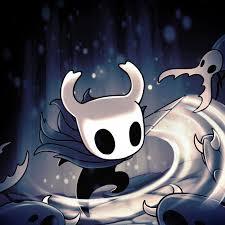
8. Which headmate has the most specific role?
This is a hard question, especially since our main role types tend to consist of "are you a manager of some sort, protector of some sort, or an experience holder of some sort?" So stuff like exotrauma holders or "x member manages y section of headspace" are pretty normal to us.
Oh wait, I know! Croissant cookie's role is, essentially, overseeing all the technology and engineering/mechanics worked on in headspace. She created cell phones we can text and call each other on semi-reliably, boxes to transfer items long distances through headspace, and other impressive feats. She's been currently invested in making beyblades for people! She's an integral part of headspace operations.
12 was answered here!
#pluralgang#plural community#mixed origin system#fictive#ask game#plural joy#prism#system infodumping
2 notes
·
View notes
Note
Top five Ghost songs? (If it's not too hard!)
NOT AT ALL!!!! i'm only counting original songs, no covers (that is its own question i think). this list is In Order btw:
per aspera ad inferi
year zero
death knell
faith
ghuleh/zombie queen
i took this question a bit too seriously, so here's my full shortlist. i gave each song scores so i could pick out the top 5, and i ACTUALLY gave spitalfields 0.25 over faith for composition, but i just enjoy faith more (more than zombie queen, too), so it ended up making the top 5 hehe:
per aspera ad inferi 10/10
year zero 10/10
death knell 9/10
zombie queen 9/10
respite on the spitalfields 8.75/10
faith 8.5/10
watcher in the sky 8.5/10
helvetesfönster 8.5/10
witch image 8/10
mummy dust 7.5/10
miasma 7/10
EDIT: I FORGOT ALL ABOUT SQUARE HAMMER 😭 i would give it an 8.5 and despite being my MOST played ghost song i don't know if it would make my top 5! maybe it'd be #6, or maybe i'd swap out death knell (gasp) for it...
#infestissumam supremacy :3#THANK YOU sanni for this EXCELLENT question!!!!!#metsantytar#ask#ghost#vaaya moodu#the band ghost
3 notes
·
View notes
Text
Secrets of Egypt (DSH Perfumes)
In one of her many incarnations, my friend JC served as a special exhibition curator for a major art museum. She recalls the singular experience of receiving a traveling exhibit of ancient Egyptian artifacts:
The most fragile and precious object was the mummified remains of a child, a young girl who was in no condition to make the journey. While two of us could have lifted her up and into the display case, there were six of us just to be certain no harm came to her. We felt very strongly that she should be pulled from the show. The exhibit coordinators appreciated our input… but said that some of the major funding they received hinged on the fact that at least one mummy be included. Over the years I had been alone in the Gallery at closing, with the lights out, on numerous occasions. However, when I found myself alone with the ancient objects of the Nile, it was somehow different. I sensed a presence. I wasn't necessarily frightened, but I didn't feel the desire to linger, either. The first time that I encountered this feeling, it really took me by surprise because it was palpable… never had I been so struck by the power of seemingly inanimate objects. There was weight and energy and power… almost a smoky essence in the air. It was as if the collective history of all of the objects formed a powerful force that commanded reverence. In that respect, I wasn't alone. I've held great works of art in my hands over the years. Rembrandt, Warhol, Dali. I've held Walt Whitman's famous hat and a first edition of Leaves of Grass. So many beautiful and awe-inspiring things-- but nothing compares in my mind to the objects from Egypt. They were the real deal.
Waiting at the root of every journey into fragrant history is ancient Egypt, where perfume pervaded all aspects of life, death, and afterlife. For its 2010-11 exhibit entitled Tutankhamun: The Golden King & the Great Pharaohs, the Denver Art Museum commissioned perfumer Dawn Spencer Hurwitz to interpret four notable formulae of the time period: Susinon, Metopion, Megaleion, and The Mendesian. To these, Hurwitz added reworkings of two fragrances from her extant catalog: Arome d’Egypt and Cardamom & Khyphi.
From my armchair travels as a history reader, I was somewhat familiar with kyphi, arguably the best-documented fragrance in pharaonic Egypt. At once perfume, incense, and medicine, kyphi began as a thick paste of raisins, honey, and pulverized aromatic resins macerated in red wine. Mastic, myrrh, frankincense, pine resin, and bdellium (Commiphora wightii, a relative of myrrh also known as gum guggul) were all used in various ratios to build this mighty base. After several days of aging, a variety of aromatic substances were ritually added in a prescribed order. These included sweet flag (Acorus calamus), papyrus (Cyperus papyrus ssp. hadidii), camel grass (Cymbopogon schoenanthus or African lemongrass), aspalathos (a shrub tentatively identified by experts as either caper bush or broom), saffron, spikenard, cinnamon, juniper berries, mint, cassia, cardamom, pine nuts, balm of Gilead buds, cedar, seseli (a flowering member of the carrot family), and bitumen (a naturally occurring black tar used to bind incense mixtures). One can imagine a finished product that smelled formidable, perhaps even overpowering—as befitted the divine rulers who made use of it.
In confronting the challenge of recreating Ancient Egypt through scent, I imagine that Dawn Spencer Hurwitz might have felt a bit like JC cradling the precious, delicate remains of that tiny child-mummy. A perfumer cast in the role of curator, she brought to the project all of the knowledge, zeal, and faith of a duly-deputized priestess of old. But when the end result needs to be marketable in a museum gift shop… the millenia must weigh awful heavy.
We know about the composition and production of kyphi and its companion fragrances because of historians such as Galen, Rufus, Dioscorides, and Plutarch. Due to their careful recordkeeping, a modern perfumer seeking to recreate these signature scents is not left at a disadvantage. It's entirely possible to compound a "reasonable facsimile" of kyphi and even give it a contemporary, personalized twist. But missing from the written recipe is power -- a spiritual significance that takes centuries to accumulate, remains tangible for centuries more, and is impossible to synthesize.
In the Secrets of Egypt museum set kindly gifted to me by a friend, only Susinon (here called 1000 Lilies) is absent. It's just as well; I admit I may not be ready for the essence with which Cleopatra perfumed the sails of her royal vessel, rendering the winds "lovesick" with scent. Instead, I reach first for Keni (The Mendesian), an interpretation of the cinnamon-myrrh accord for which the Delta city of Mendes earned its fame.
Experienced on one axis, Keni certainly does smell like an ancient unguent: hale evergreen and mint notes steeped in a precious chrism. On a second, intersecting axis, I find a burst of modern candy scents -- basil ribbons and cinnamon red-hots, spicy and bright. This is fitting. Drug stores and candy counters share a common ancestor in the apothecary, where medicine and comestible might be one and the same. Owing to my dual love of weird liniments and old-fashioned sweets, Keni (like Heeley's L'Esprit du Tigre) seems right up my alley. But in less than an hour it vanishes, leaving behind only a trace of faint waxy perfume, like that which clings to a candy wrapper once the treat inside has been devoured.
While we travel together, I truly like where Keni is headed. I just wish the trip lasted longer.
Next up: Megaleion. Taking its name variously from a Syracusan perfumer named Megalus and the Greek word megalos (“great”), Megaleion is described as an infusion of cinnamon, cassia, myrrh, and charred frankincense in balanos, an oil derived from seeds of the Balanites aegyptiaca tree. Its preparation is an interesting exercise in alchemical give-and-take. The oil must be kept at a constant boil for days before it is judged ready to receive the aromatic ingredients, whose properties it greedily devours. It remains at a boil for several days more, its scent seeming to diminish as it is stirred. Only when left alone to cool thoroughly does it relinquish all of the fragrance it has absorbed.
Yet it's not cinnamon and cassia I detect most from DSH's version of this age-old accord. Lemongrass and pine conspire to summon up the ghost of juniper berry, one of kyphi's most oft-cited ingredients. The evergreen cypress trees which produce these tiny, blue drupe-like cones originate from Greece, but their presence in Egyptian tombs implies that they were prized across borders and on both sides of life's threshold. In this floral-resinous fragrance hides their appetizing sourness, their astringent bite, and all the implied powers of purification that a Western mind may connect to them.
But the conundrum is this: they are not there. The nose tells lies, and the mind grasps at a ghost.
Antiu (Metopion) confronts the wearer with no such phantoms-- unless you count the galbanum which the name metopion is said to signify, and which here goes nearly undetected. Then again, Dioscorides opines that the best metopion showcases almond over galbanum-- in which case Antiu wins this round. With its notes of fresh carrot-root and pine needle atop a sweet almond foundation, it's a simply pleasant and pleasantly simple fragrance-- sort of a palate cleanser for the challenging course to follow.
When Greek and Arab invaders chiseled their way into ancient Egyptian tombs, they discovered that all of the scented resins, natron salts, and beeswax used to embalm the occupants had mixed with… well, the occupants themselves, biologically speaking. The resulting petrified goo, erroneously labelled pissasphaltus (pitch asphalt), was used to manufacture a range of ancient pharmaceuticals and cosmetics, including a rather esoteric perfume called mūmiyā’. It's said to have smelled like heaven itself-- presumably once you got over the gag factor.
So it is with Arome d'Egypt. A sweet opening marred by a sudden fetid note of wet wood and mushrooms reminds me of spikenard's close relation to that monster of stomach-turning stonk, valerian. Believing myself the possible victim of a primordial scourge, I thrust my arm under my husband’s nose. He takes one sniff, and together we simultaneously intone the solemn incantation against ancient evils: "Eeewwwww!"
Our rough magic works. Shortly thereafter, Arome d’Egypte transforms into a warm, penetrating cinnamon incense with a drydown graced by the cozy, animalic presence of ambrette. I feel at once favored and spared, brushed by a curse and visited by a blessing. Thank the gods!
I'm tempted to preface my final review by saying something conciliatory like “While Cardamom & Khyphi smells very nice indeed…” I mean, it does. A powerful citrus-spice potpourri cozily couched in nougat, it's a fragrance damn near anyone would love to wear. It incorporates enough classic kyphi ingredients (juniper berry, mastic, myrrh) to justify both its name and its place amongst the other Secrets of Egypt. But here's the catch: leaving it until last makes me think less of it. It smells too much like a typical DSH "Yuletide candle" frag for me to suspend disbelief and imagine that it's an authentic reproduction of a great and ancient sacred perfume. I mean, I like it. But when I expect to be Nile-bound, I don’t want to end up back in the Christmas village. You know?
So how to sum up this trip back in time? I keep returning to JC's phrase about a "force that commands reverence". Which of the Secrets of Egypt possesses it? None, to be honest. For a moment, Arome d'Egypt -- with its fear-and-trembling initial salvo -- comes close. But it's ultimately too sweet-mannered to command or enslave me. These are all fine creations, and I sincerely got a kick out of wearing them. But in a strange (and possibly silly) way, I wanted - no, NEEDED - to feel the uncanny breath of some antediluvian entity on the back of my neck, brushing me with a chill right where I applied the perfume.
Still, who knows? I have yet to encounter Susinon/1000 Lilies. Perhaps when I do, the hand of Nefertem herself will extend one of those thousand blossoms my way.
Scent Elements:
Keni (The Mendesian): Bitter almond, cardamom, cassia, cinnamon, sandalwood, benzoin, fragrant wine accord, Atlas cedar, myrrh, pine
Megaleion: Cardamom, cassia, cinnamon, fragrant wine accord, lemongrass, sandalwood, balm of Gilead accord, spikenard, Turkish rose, balsam copaiba, balsam Peru, costus, myrrh, frankincense, pine, sweet flag
Antiu (Metopion): Bitter almond, cardamom, fragrant wine accord, galbanum, lemongrass, sandalwood, rose otto, balm of Gilead accord, honey/beeswax, balsam copaiba, balsam Peru, mastic, myrrh, pine, sweet flag
Arome d’Egypte: Spikenard, cassis, rose, jasmine, labdanum, sandalwood, Virginia cedar, cinnamon bark, amber, benzoin, balsam Peru, frankincense, myrrh, ambrette
Cardamom & Khyphi: Cardamom CO2, cardamom seed absolute, clove bud, plum accord, sugar date accord, sweet orange, honey, juniper berry, labdanum, mastic, myrrh, frankincense, patchouli
2 notes
·
View notes